How to choose a pickleball paddle: Types, Dimensions, Importance & Selection Tips
When considering how to choose a pickleball paddle, it’s important to note their distinct appearance. Pickleball paddles have a very unique appearance. Compared to tennis rackets, they are smaller, but they are larger than ping pong paddles. It’s interesting to note that as long as the blade is rigid or flat, ping pong paddles can be any size, shape, or weight. Theoretically, if you really wanted to, you could play with a huge paddle or a tiny one.
Purchasing a pickleball paddle can be a little overwhelming due to the wide range of models and choices available. We’ve simplified the process of choosing a pickleball paddle by outlining the shape, weight, and material that will work best for your skill level and playing style.
Most pickleball players utilize paddles that have a typical face width, which is between 7.0 to 8.25 inches. Nonetheless, a player may choose to use an expanded pickleball paddle if they would rather extend their reach a little. Using an elongated paddle has the drawback of usually providing less power and control than a paddle with a standard design.
A pickleball paddle’s weight is also a crucial factor to take into account because it can greatly affect your stroke. Pickleball paddles that weigh more than 8.5 oz (241 g) are heavier and offer more power; paddles that weigh less than 7.3 oz (207 g) are lighter and offer more control and precision. The majority of players, particularly those at the beginning and intermediate levels who are still figuring out their playing style, strike a balance by selecting a medium-weight paddle that combines power with accuracy.
Graphite, wood, and fiberglass are some of the materials used to make pickleball paddle faces. In the pickleball world, graphite is the carbon fiber variety that’s most well-known for providing more power and an even higher degree of precision than fiberglass paddles. Additionally, because graphite is very light, it might ease the pressure on a player’s arm and grip throughout a game.
For novice paddlers or those on a tight budget, wooden-faced paddles are an excellent choice. Pickleball paddles constructed of solid wood are generally more affordable than those composed of composite materials, while still possessing a similar amount of force. Additionally, wooden paddles are far more resilient and long-lasting than composite ones.
The cores of a lot of the first pickleball paddles were composed of Nomex. Nomex, which was initially created for industrial use, provided a great degree of strength and durability without making the paddles unduly heavy. However, polymer cores have become more and more well-liked recently since they offer a better balance of power and control. Polymer cores, which frequently have a honeycomb structure, produce lightweight paddles that are highly precise, have a better overall feel, and vibrate less while striking the ball. Furthermore, compared to hardwood or Nomex cores, polymer core paddles generate a lot less noise, which can be important for backyard games!
What are the pickleball paddle types?
The most popular materials for pickleball paddles are wood, fiberglass, carbon fiber, and graphite. There are choices for hybrid vehicles as well. You can produce greater force or control when playing, depending on the material you choose for your paddle.
This overview of pickleball paddle materials will cover every choice available to you. We will also discuss core materials, which are not the same as the visible facing or surface materials. You will understand exactly which surface and core materials are ideal for your particular pickleball playing style by the time you finish reading.
- Graphite Surface Paddles: One of the lightest and thinnest surface materials you’ll come across in a pickleball paddle is graphite. In fact, these paddle faces can have an average thickness of just a few millimeters. Although graphite is a very hard and solid substance, the reduced weight of graphite paddles may give the impression that they are frail.
- Carbon Fiber Paddles: Carbon fiber is your next best bet for pickleball paddle face materials. Carbon fiber is even more durable than graphite, despite being lighter and more rigid than graphite. It sounds like graphite, doesn’t it? That’s because graphite is actually the parent material of carbon fiber. Based on their respective constructions, the two are most easily conceptualized. Graphite is essentially made up of densely packed carbon layers, while carbon fiber is layered in ribbons and connected to form fibers, similar to how threads are woven together to make clothing. It can produce more strength and stiffness in this way, utilizing less material to make it lighter.
- Fiberglass Paddles: Nowadays, the most popular paddle surface material among recreational players is fiberglass. Fibers are squeezed under intense heat and pressure to create fiberglass paddles. Following that process, soaking in resin creates a texture close to glass. It may be the case that fiberglass has the best durability out there. Fiberglass pickleball paddles are surprisingly light, so increased durability doesn’t have to mean sacrificing weight.
- Hybrid Paddles: Some pickleball paddles aren’t made of one material at all, but rather, a combination of materials. This combination of materials can be utilized to strengthen a paddle or increase its force during play. Paddle materials can be combined in a variety of ways to bring out the best aspects of each.
- Wooden Paddles: It’s crucial to know your roots, so this is the original material—possibly more of a history lesson than anything you should look to get if you want to play pickleball at a high level. Wood isn’t as common as it once was due to advancements in paddle technology, but it’s still used in pickleball paddles. A lot of cheap paddle starting sets are constructed of wood. Therefore, even though we would never advise anyone to play with a wooden paddle, we believe you should at least be aware of how it works.
The materials mentioned above can help you gain a better knowledge of a paddle’s behavior. A paddle made of fiberglass and graphite, for example, might be able to provide you with a bigger sweet spot and a better power-to-touch ratio. A carbon-fiber and fiberglass paddle may tend toward a more sophisticated feel while adding a little more force.
Like everything else in pickleball, everything is in balance and typically operates on a power and control spectrum.
What are the different parts of a pickleball paddle?
An understanding of the anatomy of a pickleball paddle is vital to better meeting the demands and addressing the concerns of players. In order to assist you in choosing the best paddle for your playing style, the different components of a paddle and their purposes are given below.
- Face: The flat area where you make contact with the ball on the paddle is called the face. Graphite, wood, and carbon polymers are just a few of the materials that can be used to create the face.
- Edge Guard: The edge guard is fastened to the paddle’s face’s perimeter. The edge guard protects the face from harm and aids in keeping its form.
- Throat: The throat joins the paddle’s face to its handle. Typically, the throat and face are composed of the same substance.
- Handle: During a pickleball match, players hold the handle of the paddle, as one might anticipate. Typically, carbon polymers, wood, or graphite are used in its manufacture.
- Grip Tape: Often simply called “the grip,” this material surrounds the handle and provides a surface for the player’s hand to make contact with. Typically, rubber or a synthetic material like polyurethane (PU) are used to make the grip tape.
- End Cap: Also known as the “butt cap,” this cap is situated at the very bottom of the handle. The end cap shields the bottom of the handle from harm.
What to look for in a pickleball paddle?
Choosing a paddle that perfectly complements your playing style is essential. The paddle you select should both control your limitations and emphasize your strengths. But with so many possibilities, it’s just too difficult to find that paddle. Furthermore, all paddle brands nowadays assert that their products are ideal for all paddlers. There are a few steps you should consider while selecting your paddle.
1. Select the sort of paddle you need: Determine whether you need one for paddleboarding, canoeing, or kayaking.
2. Select the appropriate material: Depending on how robust and light you want it to be, choose from aluminum, fiberglass, carbon fiber, or wood.
3. Determine the proper length: To determine the appropriate size, measure yourself and consider your paddling style.
4. Consider the size and shape of the blade: Choose whether you prefer a certain shape or a larger or smaller blade.
5. Verify that it feels good: Take a hold of the paddle to feel whether it’s comfy and whether it’s the proper size for you.
Pickleball Paddle Core Material Thickness
It’s no secret that having the proper pickleball paddle is essential to success in the game. However, selecting the appropriate core material is a step that is sometimes missed in the quest for the ideal paddle. Perhaps this is because the core is invisible when purchasing or even when using a pickleball paddle, but it still plays an equally crucial role in the overall functionality of the paddle.
What is a Pickleball Paddle Core? Pickleball paddle cores can be created using a variety of materials, utilizing many procedures and structural shapes. The core is the structural guts found in every pickleball paddle, and it’s often formed as a sheet of honeycomb shapes and then squeezed between both faces of a paddle.
What materials are the best pickleball paddle cores made of? Although there are several choices for core materials, the most widely utilized ones at the moment are polymer and Nomex. Each has a unique feel that can change how well pickleball paddles operate.
Pickleball paddles’ internal core depth, or the space between their inside edges, is referred to as the paddle’s core thickness. Thicker cores typically measure about 11 mm, and thicker cores are typically close to 16 mm. This measurement is typically expressed in millimeters. Paddles can differ significantly in thickness. Undoubtedly, core thickness in inches will also be encountered; nevertheless, one simple approach to conceptualize thickness is as follows.Five inches is around thirteen millimeters, or a medium core thickness. From there, you may get near to both thick and thin cores by moving up and down by a 1/16th of an inch.
Why pickleball paddle core thickness matters? Because a thick core lessens the force of the ball when it makes contact with the paddle surface, you will be able to control the ball more with each strike. On the other hand, a narrow core will generate more energy. With a thicker core, you lose power; conversely, with a thinner core, you gain control. While selecting the ideal pickleball paddle, you’ll discover that striking a balance between touch and power is a rather common problem. When you combine the proper elements, you’ll have the perfect pickleball paddle that will let you play the way you want to. Here are some pros & cons of cores:
| Thin Cores | Thick Cores | ||
| Advantages | Disadvantages | Advantages | Disadvantages |
| Lighter, quicker, and more powerful | Occasionally difficult to control, sharp feedback may be uncomfortable | Exceptionally soft and plush feel, perfect for arm comfort and resets | May occasionally lack power and be less nimble |
So how can one determine what core thickness is best for them? It truly depends on your preferences and playing style. For those who prefer playing with greater delicacy, a paddle with a thicker core can be more appropriate. A paddle with a thin core can be the best option if you want more power. Recall that you should use the paddle that allows you to perform at your highest level.
Pickleball paddle Shape
Your pickleball paddle’s shape affects everything, pretty much everything you should be concerned about in terms of performance. Certain things are clear as day. You will be able to reach some shots more readily if your paddle is longer. Less visibly, the form of your pickleball paddle affects your power and spin generation, how fast you can shift the direction of your paddle face, and even the size of your sweet spot. Here I mentioned Dimensions of the paddle shape:
- Elongated: An elongated paddle is 16.5 inches by 7.5 inches.
- Standard: The dimensions of a standard-shaped paddle are 16 x 8 inches.
- Hybrid: A hybrid paddle’s approximate measurements are 16.25′′ x 7.5-7.7′′, placing it between standard and elongated designs.
Pickleball paddle Grip
Often simply called “the grip,” this material surrounds the handle and provides a surface for the player’s hand to make contact with. Typically, rubber or a synthetic material like polyurethane (PU) are used to make the grip tape.
Pickleball paddle Weight
Whilst the official USAPA rules and regulations don’t impose any restrictions on the weight of a pickleball paddle, the vast majority of paddles used by amateur & professional players weigh between 7.2oz (204g) and 8.5oz (241g).
Pickleball paddle Spin
The typical test involves monitoring RPMs to determine how much spin a paddle can impart. 1,600 RPMs were considered top-tier last year. With many of the paddles on this list ripping balls at over 2,000 RPM, you have to be in the 1,800 RPM zone this year to even be competitive.
Although picking a high-spinning paddle requires consideration of raw RPM production, the list in this article isn’t solely arranged by highest RPM values. Selection of a paddle involves more than just spin. Much more. Some excellent paddles aren’t on the list because they are being challenged for the top spot by less expensive paddles.
Pickleball paddle Facing / Surface Material
The portion that comes into contact with the ball is called the Face, and it is usually composed of composite, fiberglass, or carbon fiber. The face can have a variety of textures; some paddles have a smooth surface, while others have a more textured, rougher surface. In below table I mentioned them mostly used paddle surface materials:
| Material | Description |
|---|---|
| Carbon Fiber | Lightweight and strong material, better than graphite, made from layers of ribbon-like fibers that come from graphite. |
| Fiberglass | Popular among recreational players, fiberglass paddles are durable and lightweight, created by compressing fibers under heat and pressure, then soaking in resin for added durability. |
| Hybrid | Combines various materials for enhanced strength and performance, leveraging the strengths of each material to optimize paddle performance during play. |
| Wooden | Traditional material, less common due to technological advancements, often found in cheaper paddle starting sets, providing basic functionality but lacking advanced features. |
What are the dimensions of a Pickleball paddle?
How much do pickleball paddles weigh? Whilst the official USAPA rules and regulations don’t impose any restrictions on the weight of a pickleball paddle, the vast majority of paddles used by amateur & professional players weigh between 7.2oz (204g) and 8.5oz (241g).
What weight pickleball paddle should you use? The answer to this question will largely depend on your style of play and level of experience. Heavier paddles tend to offer more power and are usually best suited to players who like to play groundstrokes, whilst lighter paddles are often favored by players who like to play a lot of volleys, as they tend to offer greater control and precision.
For beginners, it is usually best to opt for a mid-weight pickleball paddle, which offers a balance of both control and power. Once a beginner has established his/her favored style of play, they can then choose a pickleball paddle weight accordingly.
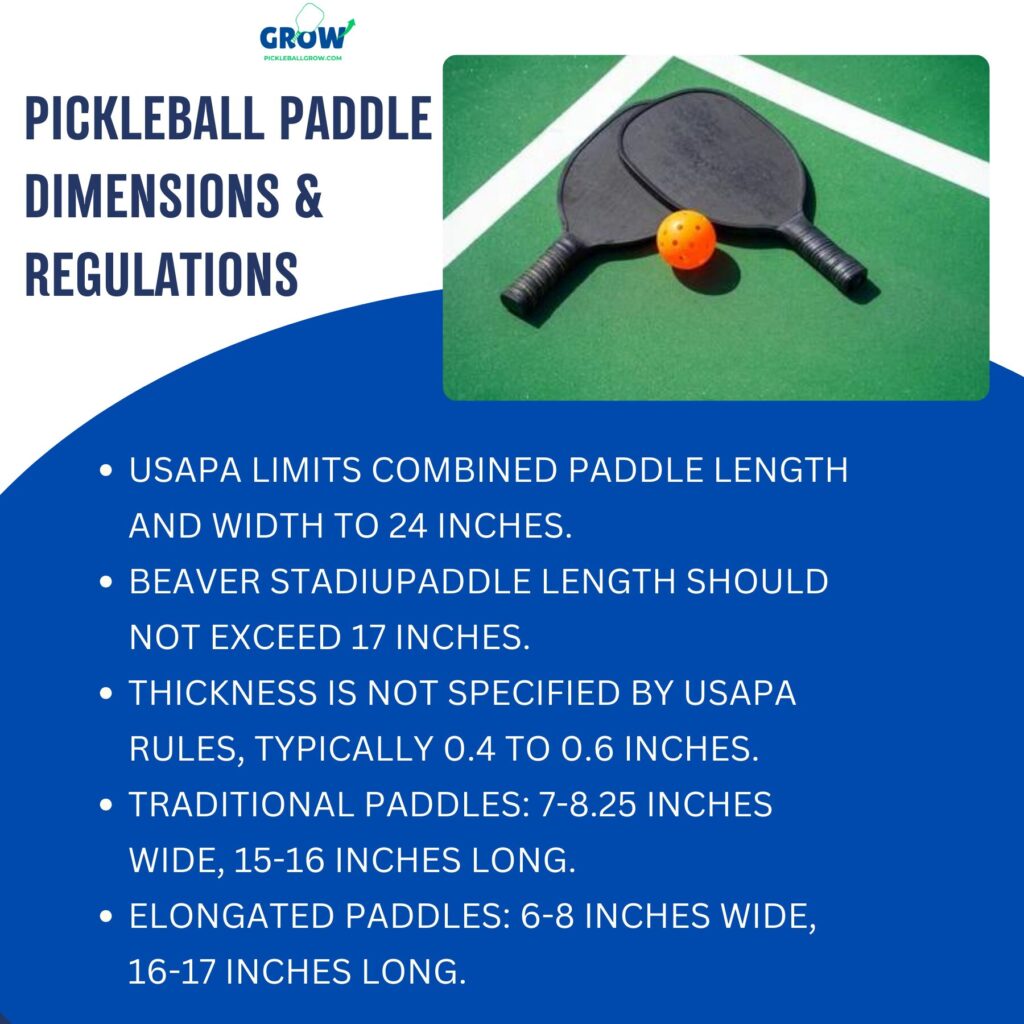
Understanding the size rules for pickleball paddles is important. According to USAPA, the total length and width can’t be more than 24 inches, with the length capped at 17 inches. While thickness isn’t set, most paddles are around 0.4 to 0.6 inches thick. Traditional paddles are usually 7-8.25 inches wide and 15-16 inches long. Longer-faced paddles, called elongated paddles, are narrower, about 6-8 inches wide and 16-17 inches long. Following these guidelines ensures you’re using a paddle that’s legal for play.
How do Pickleball paddles compare to rackets?
How do pickleball paddles compare to rackets & paddles used in other sports? Pickleball paddles stand out for their unique size and design. They’re larger than ping pong paddles but smaller than tennis rackets. Interestingly, ping pong paddles can vary widely in size, shape, and weight, as long as the blade is flat or rigid.
Tennis rackets typically have a maximum length of 29 inches, with most professionals using rackets around 27-27.5 inches long. Badminton rackets are similar in length to tennis rackets, while racquetball rackets are notably shorter.
Unlike tennis and squash rackets which have strings, pickleball paddles and ping pong paddles have a solid face. Whilst pickleball paddles can be any color, ping pong paddles must be bright red on one side and black on the other. In the following figure, you can see the difference between pickleball paddles and other sports rackets:
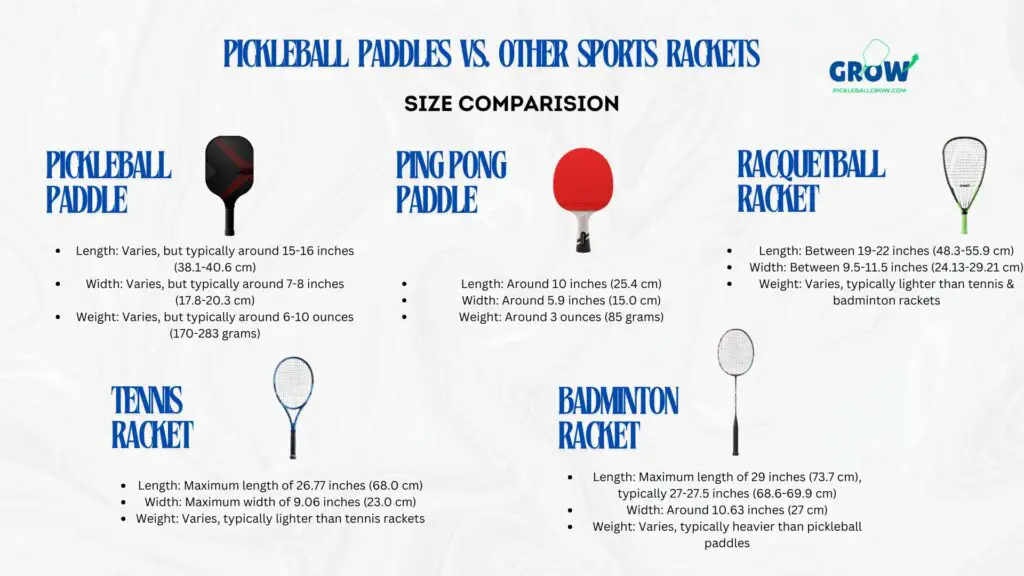
How to measure your paddle grip size?
Making sure that you choose a pickleball paddle with the correct grip size is important for both performance and comfort. If you use a pickleball paddle with a grip that is too large, it can quickly lead to grip-fatigue and longer term may cause issues related to inflammation and tendonitis in the elbow or wrist.
How do you measure grip size for a pickleball paddle?
- Grab a ruler and, use the following steps and the diagram below to find your ideal pickleball paddle grip size:
- Hold your dominant hand out in front of you, with your palm open and fingers pointing straight up
- Gently place your fingers together so they are touching – your thumb can point out to the side and remain separate
- Align the bottom of the ruler with the bottom lateral crease in the palm of your hand
- Use the ruler to measure to the top of your ring finger.
What are the best pickleball paddles?
Pickleball paddle is the most crucial piece of equipment for each pickleball player.
The paddle is used to hit the ball over the net and into your opponent’s possession. It consists of a handle and a sizable flat surface area. To fit your playing style, the paddle’s surface and core can be constructed from a variety of materials. You can have more power, accuracy, control, etc. depending on the material you select. For instance, among the surface materials available are:
- Pickleball paddles made of fiberglass give you extra power.
- Pickleball paddles made of graphite provide you greater control.
- Carbon Pickleball paddles made of fiber provide you greater control and power.
- Pickleball paddles are available in various weights to fit your style of play.
Paddles that are lightweight—up to 205 grams—help with control and response, beginners should choose lightweight paddles (between 205 and 240 grams) as they provide both power and control.
Over 240g of heavy paddles help produce more power.
Consider the thickness of the core of your pickleball paddle as well. The typical range of core thickness is between 11 and 16 mm; thinner cores produce more power, and larger cores will give you greater control. It all comes down to finding the ideal balance for you and a paddle that fits your preferred style and approach to the game.
The best paddles for beginners? If you’ve never played pickleball, Panel Sound Pickleball Paddles will be best. Best Overall? The Omega Evolution Extreme X’s greatest feature is how accurate it feels. This paddle boasts a classic design, a middle-of-the-road 7.7-ounce weight, and a polymer honeycomb core with a skin composed of carbon fiber. Although the half-inch core is supposed to provide more power, this paddle lacks the pop of the others in this list. Power, though, has two sides when it comes to trying to get a plastic ball to drop inside a 22-foot box.
How do you select the color of your pickleball?
The pickleball ball should contrast with and stand out from the surrounding area, particularly the court’s color. The ideal color for a pickleball ball differs from the color of the court. A white ball would be ideal if you’re playing on an indoor court and want to be able to play in dim light.
What is the importance of paddle in a game?
What is the importance of paddle? A pickleball paddle is very important. When it comes to spin, the pickleball paddle that is used correctly is crucial. Pickleball players can give extra twists and surprising shots for their opponents to return by using the proper pickleball paddle. Not every paddle is made equally. There are a ton of options available on the market. All you have to do is select the appropriate pickleball paddle based on your skill level and style of play.
The paddles made of composite materials and featuring a rough surface are well-known for their ability to enhance spin. All of these paddle varieties have substantially better grips, allowing players to manage spin simply and softly. A correct pickleball paddle enhances your performance on the court, optimizes your spin potential, and fits your playing style.
With the greatest style possible, you can spin your way to victory with a well-chosen paddle. and improve your ability to spin as well. So make an informed decision and allow your paddle to complement your on-court tactics and abilities. The finest pickleball paddle improves your game because it may push you to new heights and improve your performance.
Conclusion
We hope that this debate will assist you in choosing the best pickleball paddle for you. Finding one that you are comfortable with is of utmost importance. You shouldn’t be convinced to buy anything that doesn’t feel pleasant in your hands by any number of marketing gimmicks.
FAQs about How to choose a pickleball Paddle
What are the main materials used to make pickleball paddles?
Pickleball paddles are primarily made of wood, composite, and graphite.
How does the weight of a pickleball paddle affect gameplay?
While heavyweight paddles give more stability and power, lightweight paddles offer improved maneuverability and control. Midweight paddles balance power and control.
How should I choose a pickleball paddle based on my playing style?
A paddle with a larger face and heavier weight is better suited for players who appreciate control and precise shots. A lighter paddle with a smaller face is better if you play with aggression and power.
What are some additional considerations when choosing a pickleball paddle?
When selecting a pickleball paddle, take into account aspects like brand reputation, price range, and noise level.
What Is A Good Pickleball Paddle?
Put simply, when you hit with a decent pickleball paddle, it “feels good.” A good one will not overstress or put too much pressure on your elbow or shoulder, and it will have a nice mix of power and control. It will have the sensation of being an arm extension.
What Is A Composite Pickleball Paddle?
While looking for the best pickleball paddle, you’ve probably heard the word “composite.” Regretfully, the term “composite” doesn’t really mean anything. It simply refers to a paddle consisting of multiple components, including the handle, edge guard, core, and face (surface). The majority of pickleball paddles that aren’t made of wood are composite.
What Are The Different Brands Of Paddles?
Due to pickleball’s recent growth, a large number of producers and companies have entered the market, including: Diadem, Electrum, Engage, Amazin’ Aces, Babolat, crbn, Franklin, Paddletek, Prince, ProKennex, PROLITE, ProXR, Selkirk, Gamma, Gearbox, Head, Joola, Monarch, Niupipo, Onix, Six Zero, Volair, Vulcan, Wilson.
Which Pickleball Paddles Do The Pro Use?
That is a thought-provoking query. Every professional has particular tastes that are specific to them, just like you. With their sponsorship agreements, many—possibly even the majority—also have financial incentives to work with a certain brand.
How Long Should A Pickleball Paddle Last?
As one might expect, pickleball paddle longevity is influenced by both the frequency of use and care given to the paddle during play. In general, it ought to endure one to three years. After then, you’ll notice that its performance starts to deteriorate and it starts to lose some of its “pop.”
What is the best pickleball paddle?
The best pickleball paddle for a player varies depending on their playing style, skill level, and personal preferences, therefore there is no one-size-fits-all answer to this question. Here is a quick answer that may fit for all out there.
Best for Beginners (non set) – Selkirk Sport SLK Latitude
Best for Intermediate Players – Tempest Wave II Graphite Paddle
Best for Advanced Players – JOOLA Ben Johns Hyperion CFS 16
Best Under $100 – Onix Graphite Z5
Best Value Set – Gonex 2 Paddle Set
How do pickleball paddles compare to rackets & paddles used in other sports?
Pickleball paddles are very distinctive. They are larger than ping pong paddles, but smaller than tennis rackets.
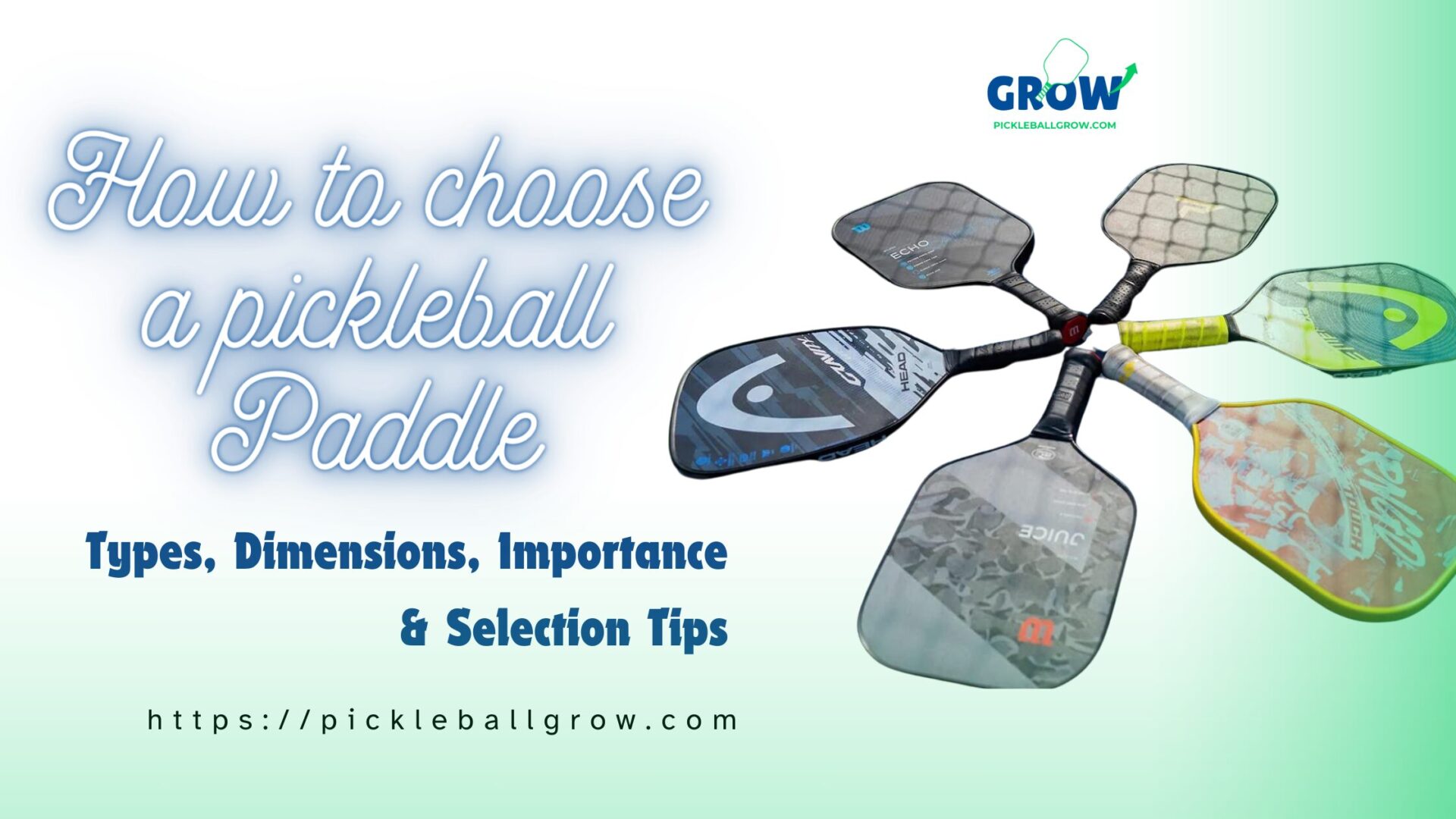
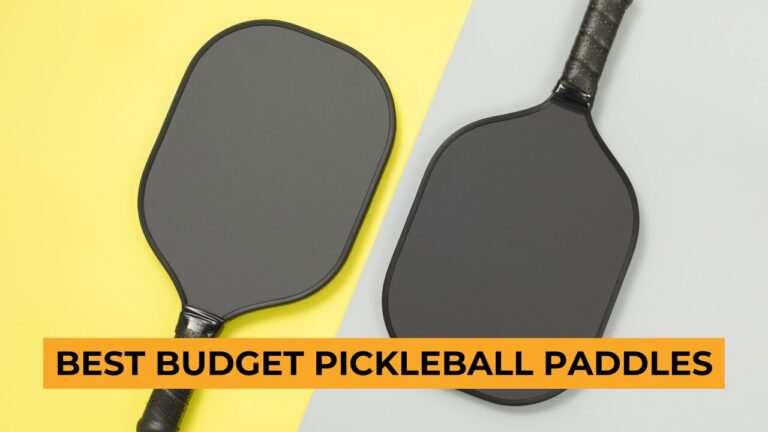
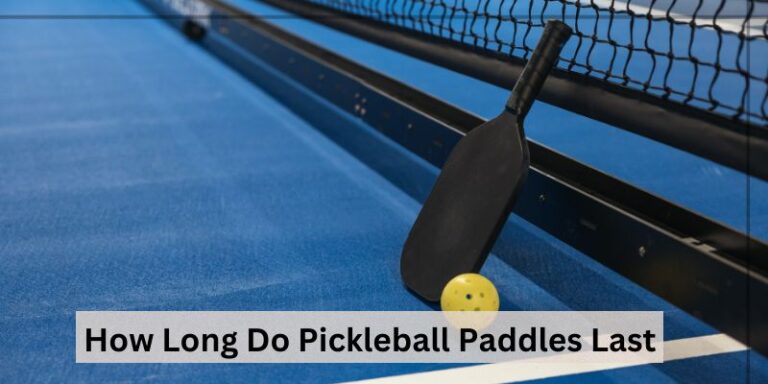
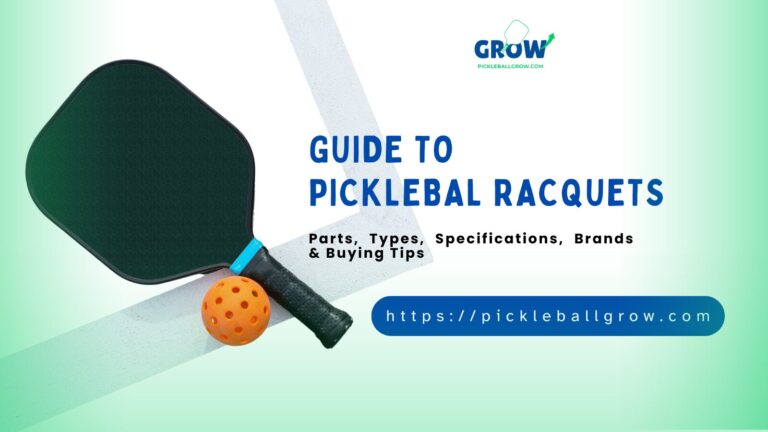
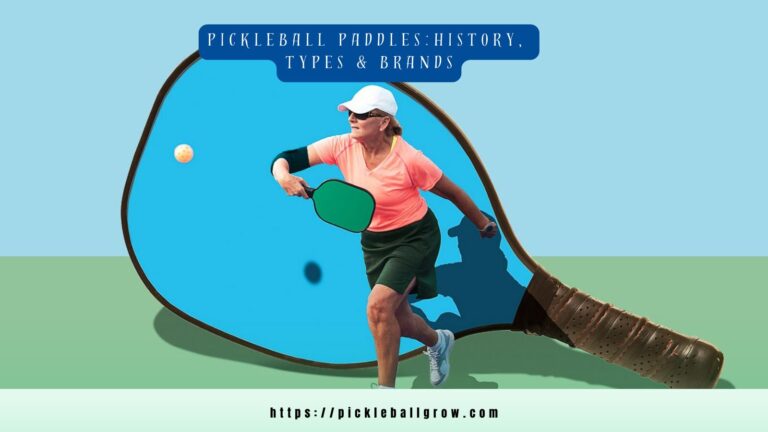


4 Comments